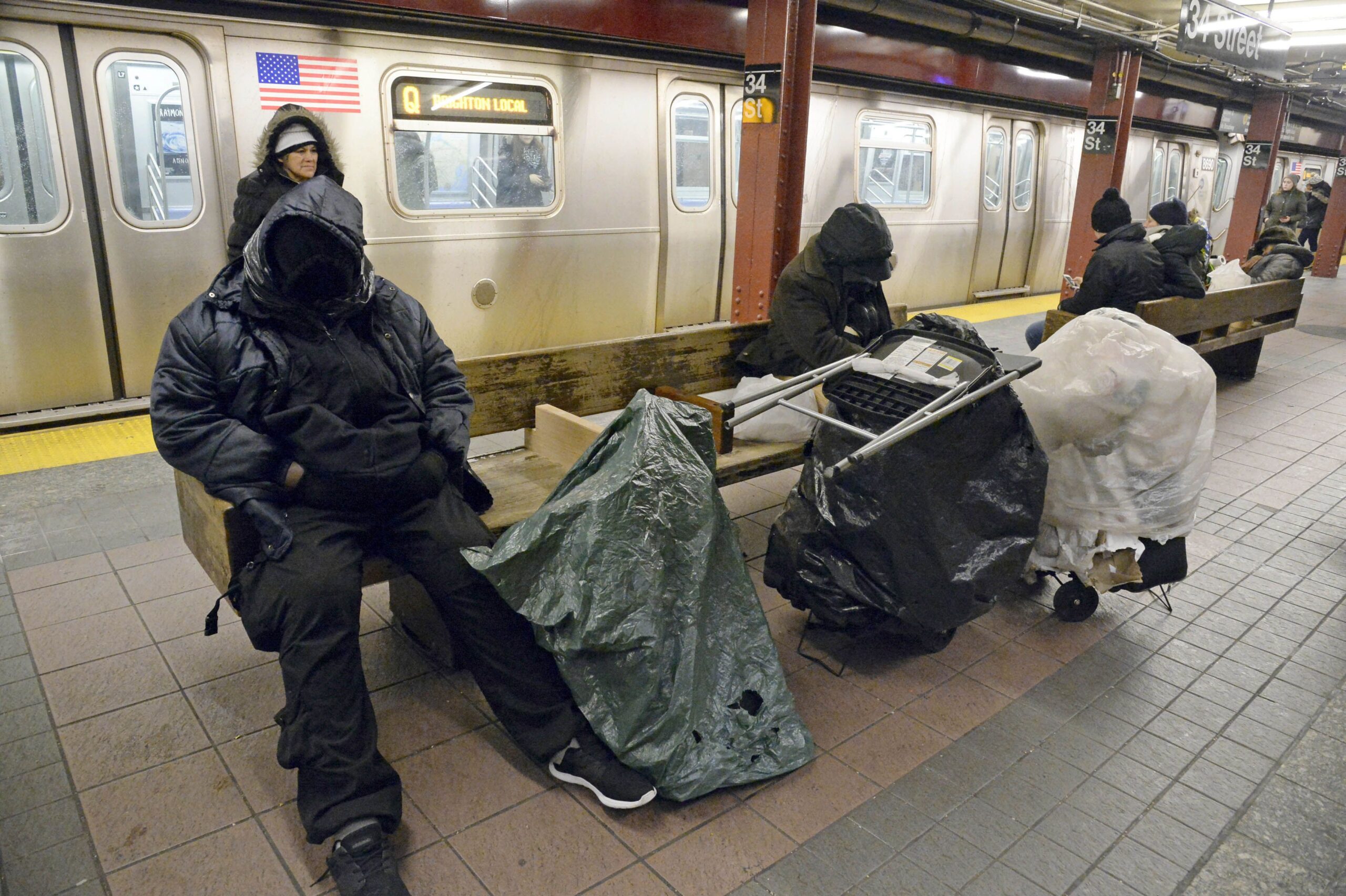America’s Public Transit Nightmare
Taking the bus can be a harrowing experience.

Americosis: A Nation’s Dysfunction Observed from Public Transit by Sam Forster (2024, Sutherland House), 129 pages.
Public transit has always asked its patrons to assume undefined risks. In exchange for a few dollars, the transit authority offers that you can get from the general area of your origin to the general area of your destination along with others who have the same goal.
There’s the rub. Marketing materials for public transit rarely feature their patrons, and for good reason. The promoters tend to favor a driver standing with a sense of authority at the step of a bus or a train conductor glancing through his window. The patrons offer something less predictable: a mix of those who are in a hurry and those who are decidedly not in a hurry, a reserved majority and an extroverted minority, a quiet consensus to give peace a chance interrupted by someone who’s still thinking that one over.
The experience generally works out as a net positive on the individual level. Though the risk is a small price, some are unwilling to pay it. Sam Forster was willing, and he has compiled his observations in a helpful little book called Americosis. A blend of cultural analysis, data collection, and bright journalistic color, Forster offers a delicate treatment of coarse content.
The author, a Canadian, travels south to get a sense of the environment surrounding the Dallas Area Rapid Transit (DART) system. The situation he describes is nothing short of disorder. As drug use and mental instability pervade, normal customers are relegated to a position of inferiority. Loud ramblings overcome the otherwise universal hope for quiet, a standard to which most riders have resigned themselves.
To illustrate the point, Forster recalls a bus ride during which the passenger behind him warned, “DIS MUH’FUCKA GON’ GET IT…dis muh’fucka really gon’ get it!” For the veteran rider, these pronouncements have become unsurprising; the regular exposure has worn down his capacity for fear.
But for the uninitiated, such a threat could portend a serious problem. Despite an elevated heart rate, sweaty palms, and a heightened sensitivity to all that’s around him, the amateur tries to get a sense of the accuser’s intentions and does all he can to distinguish himself from the accused.
The man, Forster says, smelled of weed and liquor; in one hand “was a revolver that was being casually twirled around his index finger like a set of car keys.” For the better part of half an hour, Forster says he watched the man in the reflection of his phone until the bus reached the next stop.
Though half an hour is on the long end for the average distance between stops, Forster’s experience points to the center of public-transit angst: you can only get off at the next stop. When the door closes, your presence is required until it opens back up. What happens in between is anybody’s guess, but that’s for you to find out.
Lest riders think these concerns are imaginary, DART confirms they are real. Forster identifies the advertising on DART buses and trains as an historical marker for what would otherwise be a psychological bother. “Assaulting a DART employee is a felony,” one sign advises. “Violators will be prosecuted to the full extent of the law.” For the normal rider, this informal legal counsel reminds them that, presumably, one of DART’s drivers or conductors has been assaulted in the past and that the only thing stopping a criminal from doing the same to themselves is the threat of a criminal charge.
Subscribe Today
Get daily emails in your inbox
The author’s observations indicate a culture of poverty and desperation on Dallas’s public transit system, then turn to a critique of personal automobiles as the norm for transportation. His frustration with the current state of public transit is couched in a greater appreciation for the idea of public transit. In theory, this idea of public transit should elevate social life; it’s one remaining cultural structure that involves strangers taking part in a goal that’s common yet distinguishable among individuals.
Car culture, Forster laments, will remain so long as public transit retains its reputation as being unsafe and the car retains its reputation as a representation of success; women have a greater interest in the former and men in the latter, he says, though both groups have an interest in both factors in their own ways. Though his critiques of the car as the norm for transportation are compelling, they are unlikely to be received well by an American audience. The car is too ingrained in our culture.
Despite his romantic description of the park outside of his Montreal apartment and his prescription, one of the few in the book, for universal basic income as a cure for what he calls “the great economic absurdity of America: the fetishization of employment and the demonization of unemployment,” Forster offers a clear picture of a dim reality. Americosis should not be read as a blueprint for revived urban policy or a formula for enjoying public transit as it was meant to be, but as good journalism from a dejected transit system. Some of it sounded familiar; I read most of it on the train.